Islamabad, the capital city of Pakistan, is a bird watcher’s paradise. Located near the foot of the Himalayan Mountains and surrounded by picturesque hills and forests, the city is home to a diverse range of bird species.
From common birds like sparrows and pigeons to rare migratory species like the Siberian Rubythroat and the European Roller, Islamabad is a haven for bird lovers.
The city’s parks, green belts, and wetlands provide habitat for both resident and migratory birds, making it an ideal destination for bird watching enthusiasts.
In this article, we will explore the rich birdlife of Islamabad and learn about the different species that call this beautiful city their home.
1. White-Throated Kingfisher
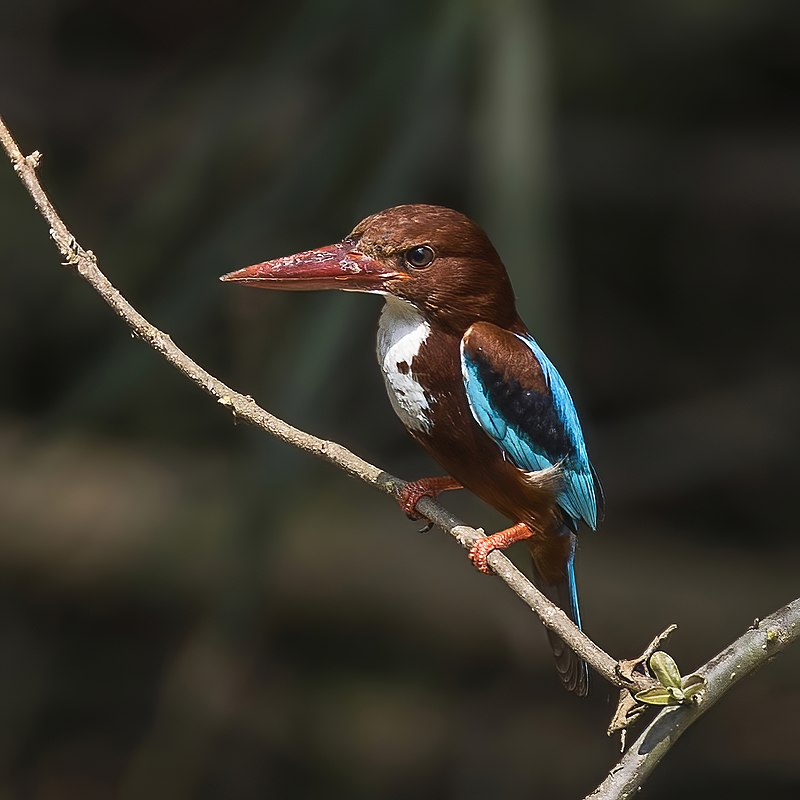
The White-throated Kingfisher is a beautiful bird with bright colors and distinct features. Its back, wings and tail are a deep blue while the head, breast, throat and belly are white.
It has two black stripes across its eyes which contrast nicely against its orange beak and feet.
These birds can often be found perching on tree branches or hovering over creeks in search of food like fish or small insects such as grasshoppers or crickets.
They use their sharp bill to pluck prey from water surfaces then swallow them whole after making adjustments for size by beating it against rocks if necessary.
The White-throated Kingfisher breeds during monsoon season when rainfall increases levels in rivers leading to an abundance of aquatic life that these birds love so much.Scientific classification:
| Kingdom | Animalia |
| Phylum | Chordata |
| Class | Aves |
| Order | Coraciiformes |
| Family | Alcedinidae |
| Subfamily | Halcyoninae |
| Genus | Halcyon |
| Species | H. smyrnensis |
Also Featured In: Common Birds in India, Turkey Birds You Should Know
2. Bank Myna
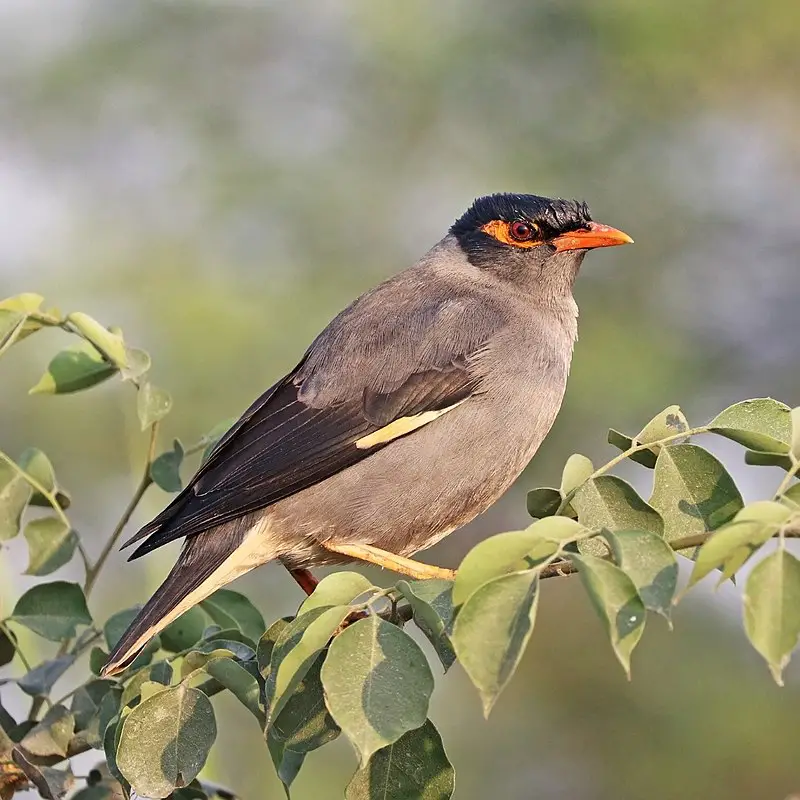
The Bank Myna is a small bird belonging to the myna family, found in the northern parts of South Asia. It has greyish brown plumage with brick-red skin behind its eyes and white feathers on its abdomen.
The most distinctive feature that sets it apart from other mynas is its tuft of feathers at the back of its head which gives it an elegant look. It usually resides in flocks, feeding mostly on fruits, grains and insects.
They also have a loud call which they use for communication among themselves as well as to ward off predators or rivals within their area.
These birds are very social creatures and can often be seen perched atop branches or flying around together in groups looking for food sources like grasslands & agricultural fields etc., making them quite popular amongst farmers who rely heavily upon these birds’ natural pest control abilities.Scientific classification:
| Kingdom | Animalia |
| Phylum | Chordata |
| Class | Aves |
| Order | Passeriformes |
| Family | Sturnidae |
| Genus | Acridotheres |
| Species | A. ginginianus |
Also Featured In: Native Pakistani Birds,
3. Indian Pond Heron
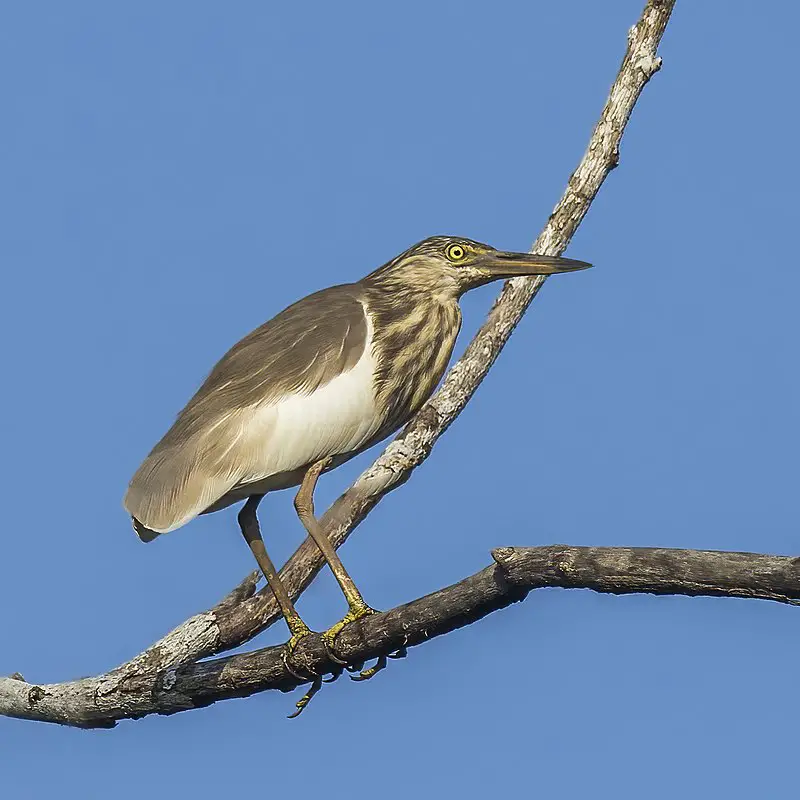
The Indian Pond Heron, also called Paddybird is a small heron found in the Old World. It breeds from southern Iran to India, Burma and Sri Lanka and can be seen near waterbodies or even around human habitations.
These birds are easily recognisable when they take off as their wings make a loud whistling sound due to its long flight feathers which are greyish-brown with white patches on them.
They feed mainly on fish but will eat other aquatic creatures such as frogs and insects too.
During breeding season they construct nests made of reeds close to water bodies where they lay 3–5 eggs at once.
The female incubates the eggs for about 19 days after which both parents share duties of feeding chicks until juveniles become independent enough to fly away.Scientific classification:
| Kingdom | Animalia |
| Phylum | Chordata |
| Class | Aves |
| Order | Pelecaniformes |
| Family | Ardeidae |
| Genus | Ardeola |
| Species | A. grayii |
Also Featured In: Gujarati Birds, Common Birds in Kerala
4. Himalayan Bulbul
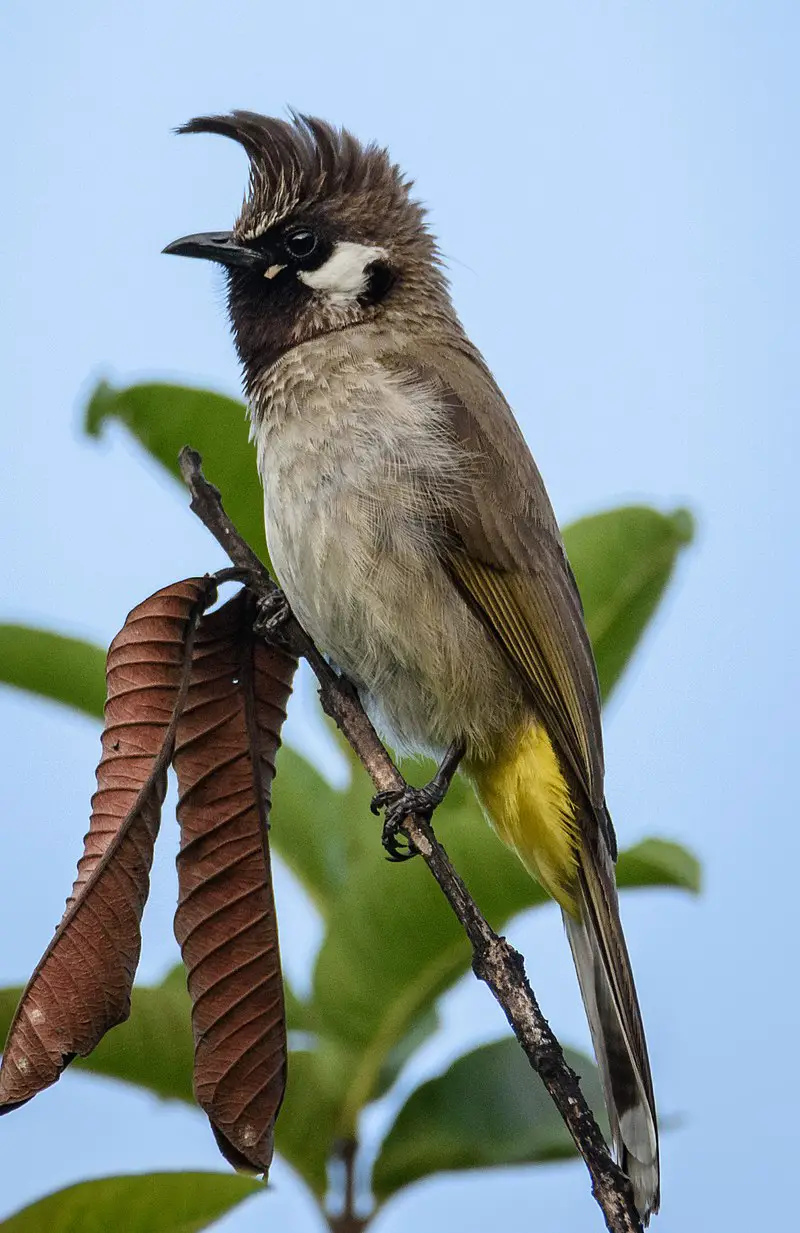
The Himalayan bulbul is a species of songbird found in Central and South Asia, belonging to the same superspecies as other bulbuls such as the white-eared, Cape and common.
It has striking physical characteristics; its head is black with a bronze tint on either side while it’s underparts are greyish-white.
Its most defining feature however, are two bold white cheek patches that contrast against its dark body.
This bird has an impressive vocal range which includes whistles, trills and chirps used for communication between individuals or flocks when they gather together during breeding season.
The Himalayan bulbul mainly eats fruit but sometimes feeds on insects too.
An interesting fact about these birds is their ability to mimic other calls including those made by humans – making them great pets if kept responsibly.Scientific classification:
| Kingdom | Animalia |
| Phylum | Chordata |
| Class | Aves |
| Order | Passeriformes |
| Family | Pycnonotidae |
| Genus | Pycnonotus |
| Species | P. leucogenys |
5. Common Wood Pigeon
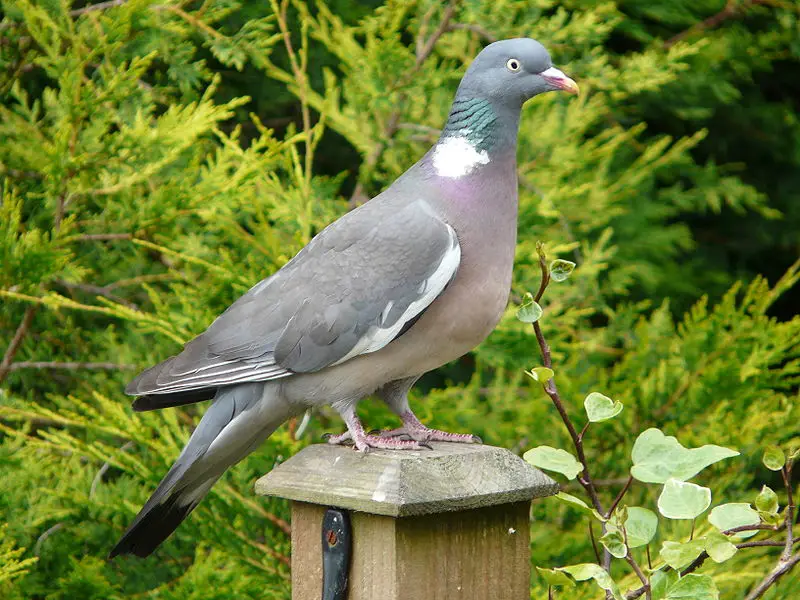
The Common Wood Pigeon is a large bird of the dove and pigeon family, native to the western Palearctic. It has grey plumage with white patches on its wings and neck.
Its head often appears darker than its body due to iridescence in some parts of its feathers. The male woodpigeons have pinkish breasts while females are more brownish-grey coloured.
These birds feed mainly on seeds, fruits, flowers and leaves but will also eat insects when available.
They breed during springtime producing 1-2 clutches per breeding season with two eggs each time which hatch after about 18 days incubation period by both parents taking turns for duty.
They make their nests from twigs collected from nearby trees or places close by and usually raise only one brood at a time making them an important part of nature’s balance as they help keep insect populations under control through their diet choices.Scientific classification:
| Kingdom | Animalia |
| Phylum | Chordata |
| Class | Aves |
| Order | Columbiformes |
| Family | Columbidae |
| Genus | Columba |
| Species | C. palumbus |
Also Featured In: Birds of United Kingdom, Ukrainian Birds You Should Know
6. Red-Vented Bulbul
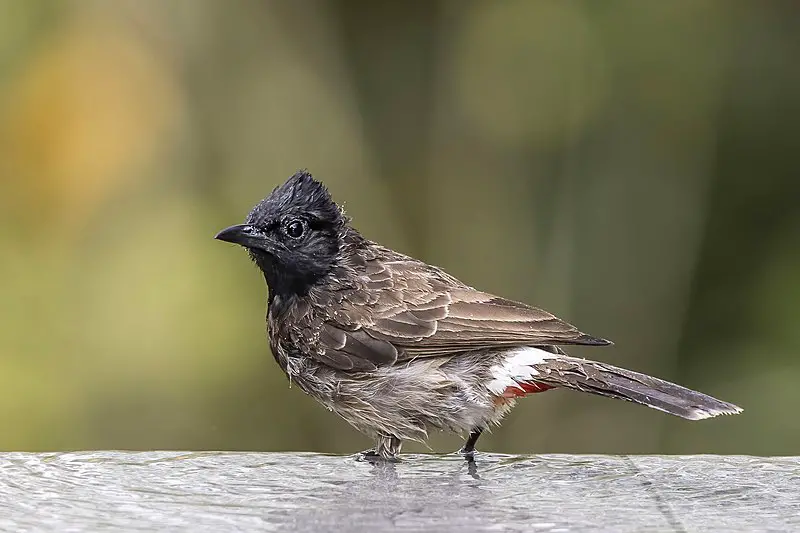
The Red-vented Bulbul is an impressive bird native to the Indian subcontinent, and has been introduced to regions around the world.
It belongs to the bulbul family of passerines and is a resident breeder in many countries including Sri Lanka, Burma, Bhutan and Nepal.
It also thrives in New Zealand, Argentina, Tonga and Fiji as well as parts of Samoa, Australia USA and Cook Islands.
This species has grey heads with white cheeks that contrast sharply against their black wings with bright red vent feathers which give them their name.
They typically live near woodland areas where they can forage for fruits or small insects on trees or bushes; this makes them useful birds for controlling insect populations naturally.
The male red-vented bulbuls are renowned songsters who sing out from treetops at dawn each day – adding some beautiful melodies to any garden.Scientific classification:
| Kingdom | Animalia |
| Phylum | Chordata |
| Class | Aves |
| Order | Passeriformes |
| Family | Pycnonotidae |
| Genus | Pycnonotus |
| Species | P. cafer |
Also Featured In: Birds of Myanmar, Common Birds in the Cities
7. Black-Headed Jay
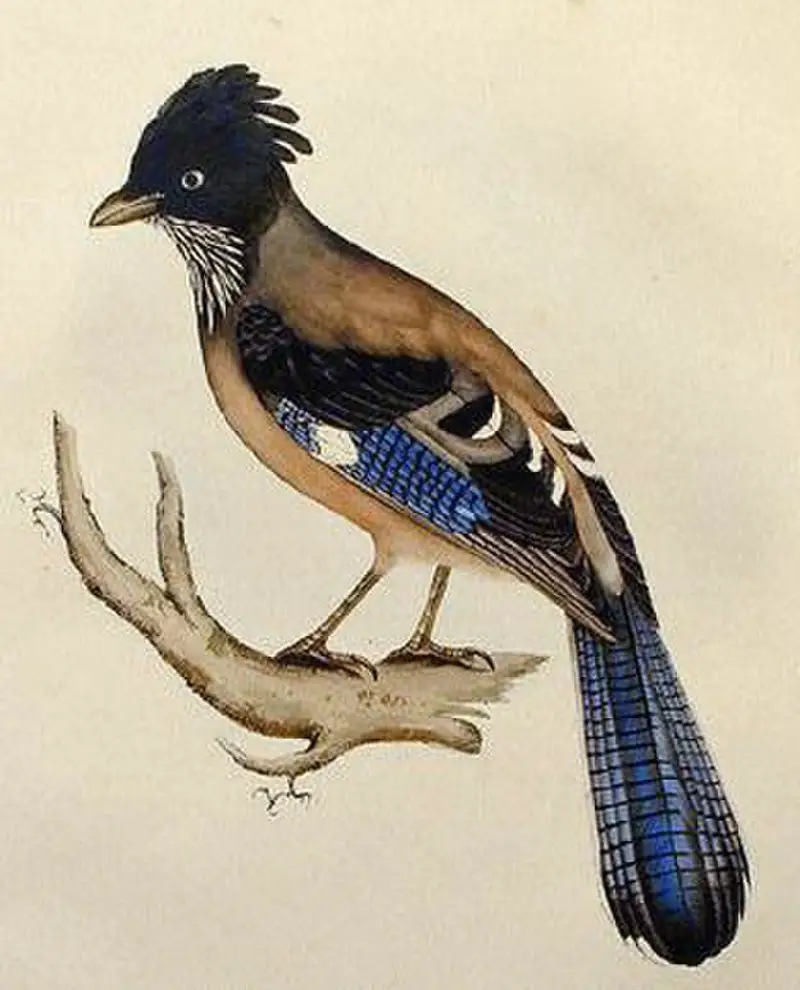
The Black-headed Jay is a stunning bird with its black head and crest, contrasting against the brown feathers of its body. It has long tail feathers that give it an elongated appearance.
This species can be found in Eastern Afghanistan, across the Himalayas to India, Nepal and Bhutan. They are roughly similar size as Eurasian jays but have slightly shorter and thicker bills.
These birds forage on ground level for insects or seeds which they store in their crop before taking them back to their roosts where they feed others from their stash – this behaviour makes them quite popular among farmers.
In addition they also eat fruits such as berries when available during winter months providing food sources for other animals too due to regurgitation of undigested remains.Scientific classification:
| Kingdom | Animalia |
| Phylum | Chordata |
| Class | Aves |
| Order | Passeriformes |
| Family | Corvidae |
| Genus | Garrulus |
| Species | G. lanceolatus |
Also Featured In: Native Birds of Afghanistan, Birds that Live in Uttarakhand
8. Crested Kingfisher
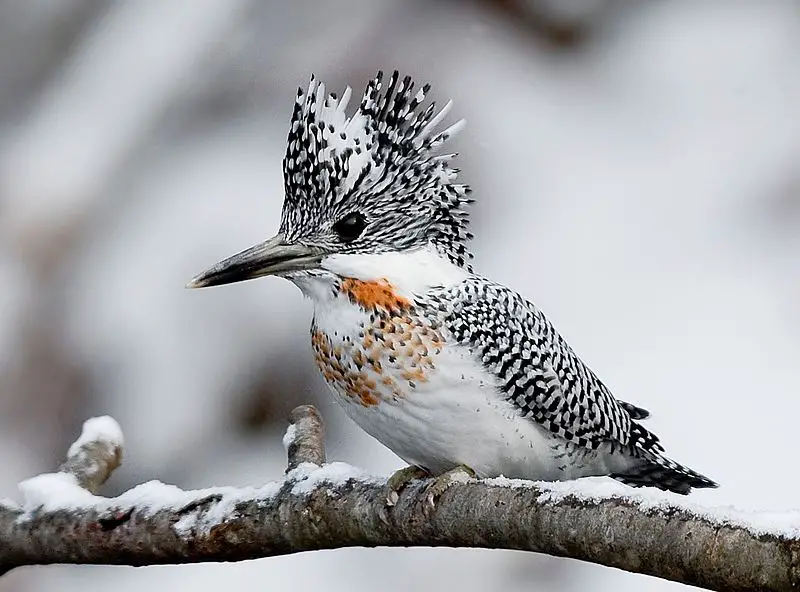
The Crested Kingfisher is a very large bird, native to parts of southern Asia stretching eastwards from the Indian Subcontinent to Japan.
It forms a species complex with three other Megaceryle species and was first formally described by Dutch zoologist Coenraad Jacob Temminck in 1834.
The Kingfisher has an impressive size ranging between 28-33 cm long and can weigh up to 85 gms. Its distinctive crest adds beauty as it gives them their name ‘Crested’.
They have bright blue upperparts along with white underparts, reddish bill and legs; often making its presence known through loud callings that echo across forests or wetlands they inhabit.
Their diet mainly consists of fish but also includes insects, crustaceans & frogs which are all caught using its sharp beak.
All in all this beautiful yet powerful creature makes for one interesting sighting out there.Scientific classification:
| Kingdom | Animalia |
| Phylum | Chordata |
| Class | Aves |
| Order | Coraciiformes |
| Family | Alcedinidae |
| Subfamily | Cerylinae |
| Genus | Megaceryle |
| Species | M. lugubris |
Also Featured In: Kingfishers Species, Birds of Jim Corbett National Park
9. Grey Francolin
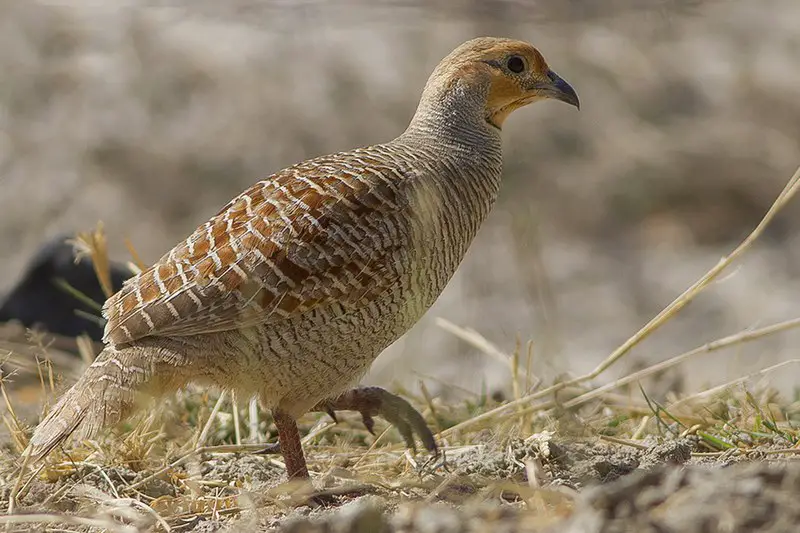
The Grey Francolin is a species of francolin found in the plains and drier parts of India, Iran and some other areas.
It was formerly called the grey partridge but should not be confused with European’s version.
This bird usually lives on ground where it finds open cultivated land. It has also been referred to as “manu moa” or “chicken bird”.
The colours can range from brownish-grey to dark grey along its body while there are black markings near its forehead area.
Its diet typically consists of seeds, leaves, insects and sometimes fruits too which they search for around bushes or tall grasses during early morning hours when these birds are most active.Scientific classification:
| Kingdom | Animalia |
| Phylum | Chordata |
| Class | Aves |
| Order | Galliformes |
| Family | Phasianidae |
| Genus | Ortygornis |
| Species | O. pondicerianus |
Also Featured In: Hawaii Birds, Hawaii Big Island Birds You Should Know
10. Shikra
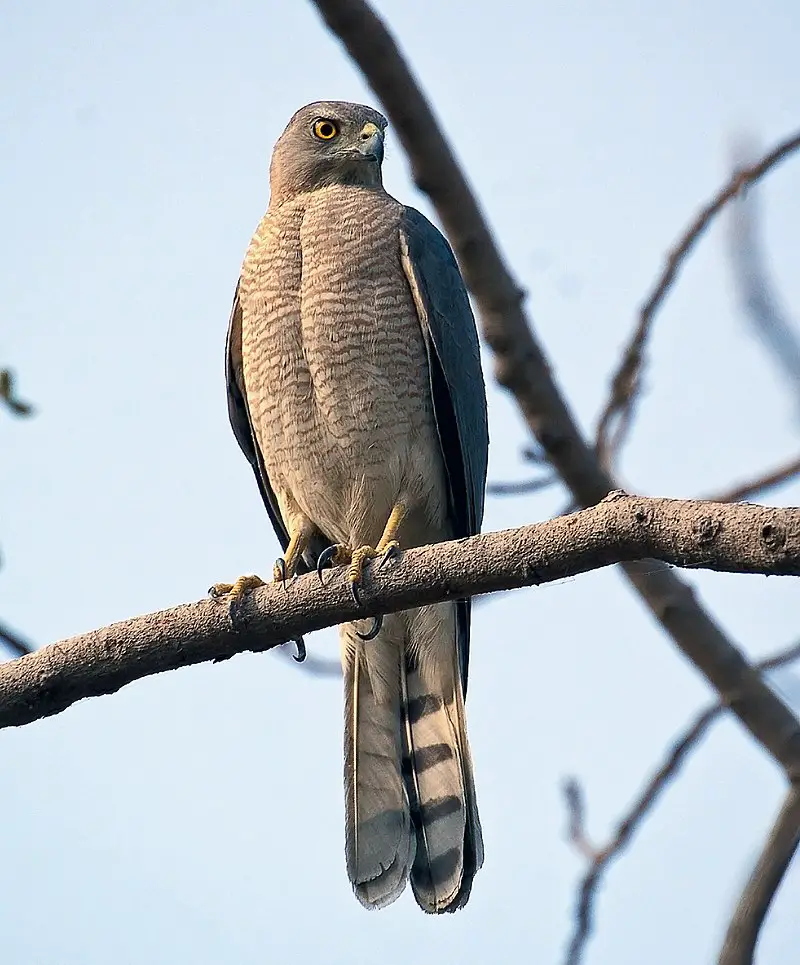
The Shikra bird, also known as the little banded goshawk, is a widespread bird of prey found in Asia and Africa. It is a small species belonging to the Accipitridae family.
The African variations of the Shikra may potentially represent a distinct species, but they are usually considered subspecies.
This bird has physical similarities to other sparrowhawk species, such as the Chinese Goshawk and Eurasian Sparrowhawk.
The Shikra is a quick predator and possesses excellent hunting skills. It typically preys on small mammals, reptiles, and birds.
The bird is known for its distinctive hunting technique, which involves a sudden dash and a quick silent strike to capture its victim.
Its plumage consists of brown or greyish-brown feathers with white and fine black streaks.
Overall, the Shikra bird is an impressive bird of prey, known for its versatility and hunting prowess.Scientific classification:
| Kingdom | Animalia |
| Phylum | Chordata |
| Class | Aves |
| Order | Accipitriformes |
| Family | Accipitridae |
| Genus | Accipiter |
| Species | A. badius |
Also Featured In: Birds That Live in the Jungle, Native Birds of Kazakhstan
11. White-Throated Fantail
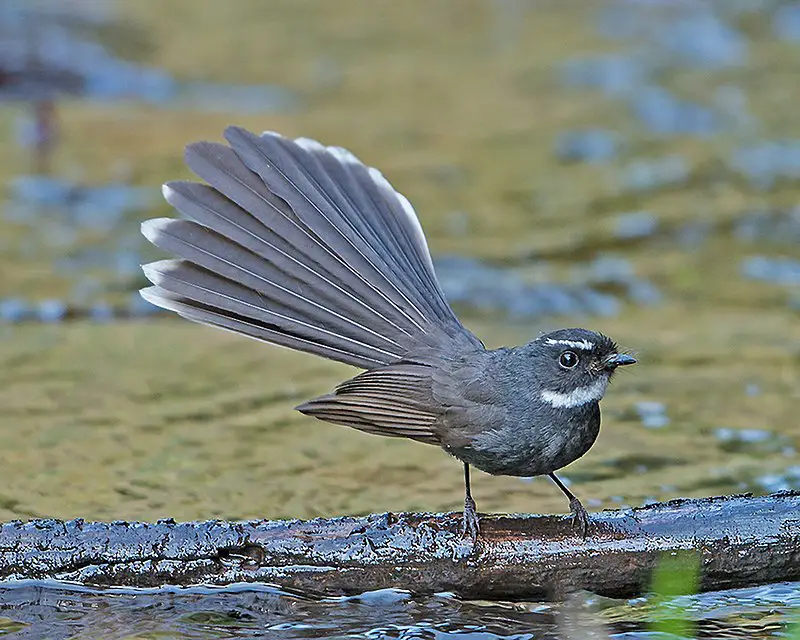
The white-throated fantail is a small bird found in tropical southern Asia, from the Himalayas to Indonesia. It can be found in forest, scrub, and cultivated areas.
With a length of about 19 cm, this passerine bird has a dark fan-shaped tail with white spots. Interestingly, the white-spotted fantail was once considered a subspecies of the white-throated fantail.Scientific classification:
| Kingdom | Animalia |
| Phylum | Chordata |
| Class | Aves |
| Order | Passeriformes |
| Family | Rhipiduridae |
| Genus | Rhipidura |
| Species | R. albicollis |